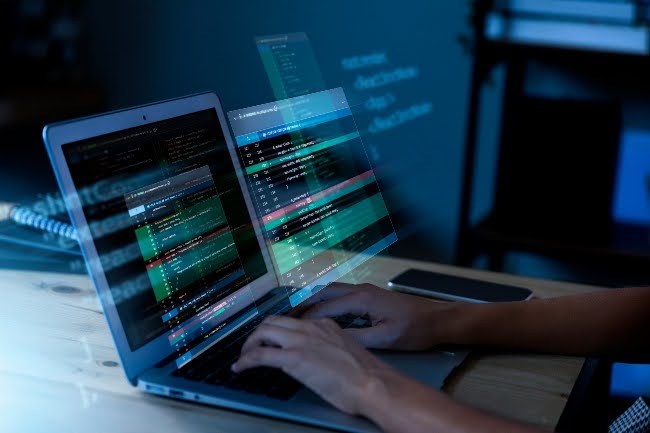Cybersecurity is, now more than ever, a priority for any organization. As digital threats evolve, so must the strategies to detect and prevent them.
In this context, pentesting (or penetration testing) has become a key practice for assessing the security level of a company’s computer systems.
But is it enough to make a pentesting punctual? What limitations does it have? And most importantly, how can a company complement this practice to maintain an active and continuous security posture?
Throughout this article, we will answer these questions, addressing the main advantages and disadvantages of pentesting, and analyzing how tools such as Kartos by Enthec can take threat management further.
What is pentesting, and what is it for?
Pentesting, also known as pentesting, consists of a controlled simulation of a computer attack to detect vulnerabilities in systems, networks, applications, or IT infrastructures. That is, it is about putting yourself in the shoes of an attacker to see what weaknesses could be exploited.
This exercise, conducted by security experts, allows organizations to identify critical failures before cybercriminals can exploit them. It’s one of the most direct ways to test whether current security measures work.
Main phases of pentesting
A professional penetration test usually follows a well-defined methodology. These are the main phases of pentesting:
- Recognition: collection of information about the target (such as IP addresses, domains, services, etc.).
- Scanning and enumeration: identification of active systems and open services.
- Exploitation: attempt to exploit detected vulnerabilities.
- Privilege escalation: if access is gained, an attempt is made to increase control.
- Pentesting report: compilation of all findings, including vulnerabilities, risk level, and recommendations.
The pentesting report is, in many cases, the starting point for correcting security errors and strengthening systems.

Highlighted advantages of pentesting
1. Discovery of real vulnerabilities
Unlike automatic scanners, pentesting goes further by reproducing real attack scenarios. This allows for detecting weaknesses that could go unnoticed by other methods.
2. Impact assessment
Pentesting not only identifies vulnerabilities but also helps measure the real impact they could have if exploited. This helps prioritize the most urgent corrective actions.
3. Improved security awareness
Performing pentesting periodically allows technical and management teams to better understand the risks they face. It can also serve as a basis for internal training plans.
4. Regulatory compliance
Many safety regulations and standards (such as ISO 27001, PCI-DSS, or RGPD) recommend or require penetration testing as part of security audits.
Disadvantages of pentesting
Although it is a very valuable tool, pentesting is not without limitations. Knowing your weaknesses is key to complementing this practice effectively.
1. Photograph of a specific moment
One of the biggest drawbacks of pentesting is that it offers a static vision of security: Analysis is performed at a specific point in time. Without ongoing review, new threats can easily slip under the radar.
2. It does not cover 100% of possible vectors
No matter how hard you try to cover all fronts, there is always a margin of error. New vulnerabilities may emerge the next day of the test, or even remain hidden during the test.
3. Economic cost and limited resources
Pentesting requires time, qualified experts, and sometimes a considerable investment. Furthermore, their frequency is limited by the available budget.
4. Operational risk
Although controlled tests, pentests can generate interruptions or system crashes if not executed cautiously.
Kartos: the perfect complement to pentesting
This is where Kartos, Enthec’s solution for companies, comes in. While pentesting gives us a snapshot, Kartos offers continuous cyber surveillance, allowing changes in a company’s exhibition area to be detected almost in real time.
Kartos is designed as a Continuous Threat Exposure Management (CTEM) tool. This means that instead of performing an annual or semi-annual review, it maintains constant monitoring, detecting new vulnerabilities, incorrect configurations, or information leaks on the network.
Its advantages include:
- Early detection of threats that may appear between pentestings.
- Automated and updated monitoring, without the need for constant manual intervention.
- Global visibility of the organization’s external exposure, including domains, subdomains, services, open ports, and more.
- Proactive alerts to avoid unpleasant surprises.
Are pentesting and Kartos mutually exclusive?
Not at all. In fact, they are complementary strategies. Pentesting remains essential to validate security from an offensive perspective, but does not replace the need for constant vigilance.
Imagine a company that conducts a pentesting in January. By March, it had implemented new cloud services, incorporated new technologies, and suffered a data breach in an external environment. If the company doesn’t have a tool like Kartos, it will not see these changes until the next test, which may be several months away.
The combination of both approaches allows for a comprehensive and adaptive coverage in the face of current risks.
Thinking beyond pentesting
Pentesting is, without a doubt, a crucial piece in any company’s cybersecurity strategy. But it is not enough to take a test occasionally and consider the issue resolved.. The changing nature of the digital environment demands a continuous, dynamic, and automated approach.
Kartos responds to this need, complementing the work of the pentesters with an up-to-date and persistent view of threat exposure. Thanks to its CTEM approach, it helps companies always stay one step ahead, minimizing risks and improving their overall security posture.
Do you want to see how Kartos can help you keep your business protected beyond the pentesting? Request a demo in Enthec and discover the future of continuous cybersecurity.
Interested in learning more about how to proactively protect your business?
Know more about our Kartos and Qondar Solutions. Cybersecurity isn’t a checkpoint; it’s a continuous journey.


